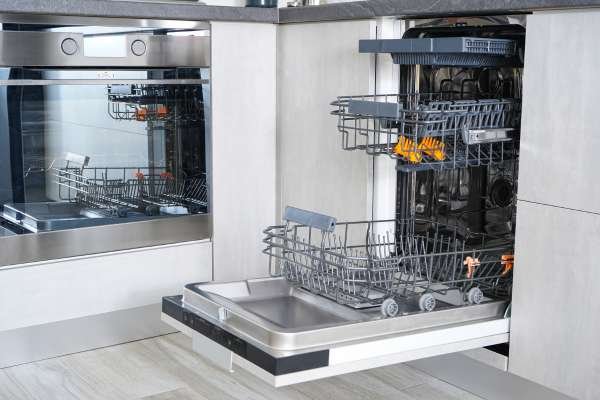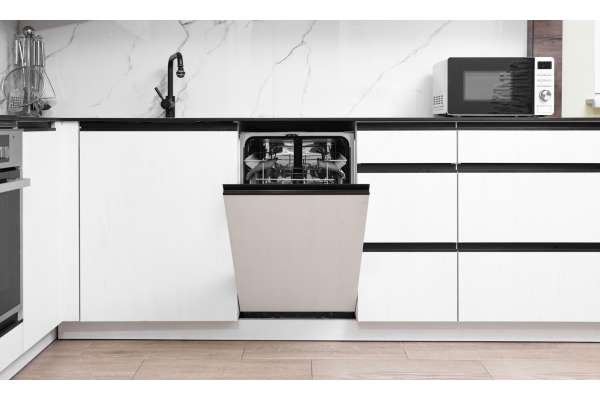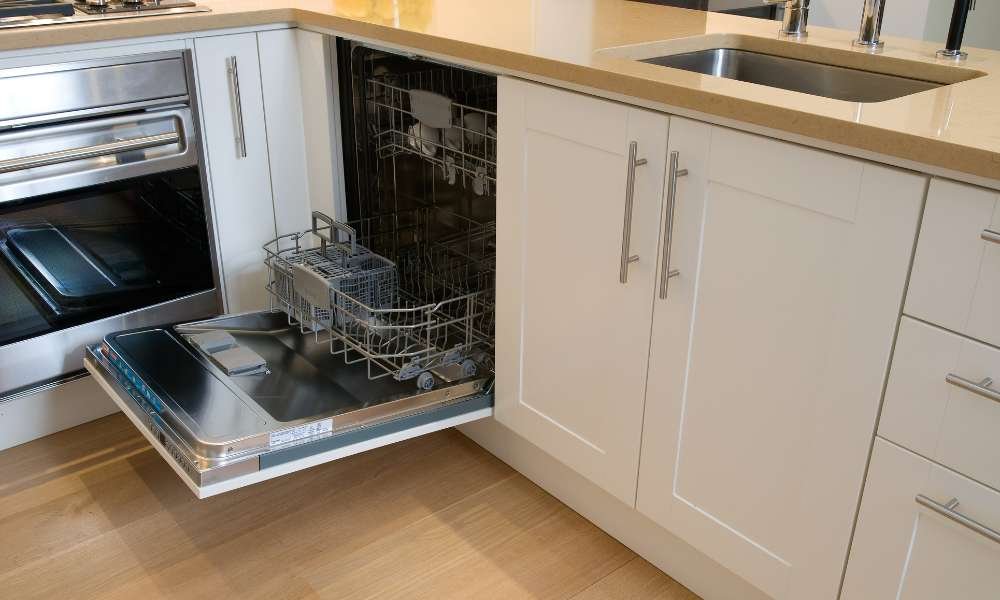Pairing kitchen cabinets with a dishwasher is more than just a practical decision—it’s a major upgrade for both convenience and kitchen aesthetics. When done right, this combination saves time, reduces clutter, and creates a seamless, modern look. Whether you’re remodeling your entire kitchen or simply adding a dishwasher, integrating it into your cabinetry allows you to maintain a uniform appearance while improving overall kitchen functionality. It’s a win-win for homeowners who value style and efficiency in equal measure.
Understanding How Dishwashers Fit into Modern Cabinet Layouts
In today’s kitchens, dishwashers are no longer afterthoughts—they’re key elements of the overall design. Modern cabinet layouts often include dedicated dishwasher slots, typically next to the sink for easy water access. These layouts are planned to ensure smooth workflow, from rinsing at the sink to loading the dishwasher. Integrated designs also consider ventilation, drainage, and cabinetry framing to ensure a secure fit without compromising storage or appearance. This thoughtful approach allows for a clutter-free kitchen that feels balanced and professionally designed.
Choosing the Right Type of Dishwasher for Your Kitchen Cabinets
Built-in Models
Built-in dishwashers are the most common and are designed to fit flush within standard cabinet dimensions. Installed directly under the countertop, they blend effortlessly with base cabinets and offer a clean, built-in look. They’re perfect for homeowners seeking a traditional, unified design and are often available in panel-ready versions for even greater integration.
Drawer Dishwashers
Drawer dishwashers are a stylish and ergonomic choice, especially in modern or smaller kitchens. They slide out like drawers, making loading and unloading easy. Single or double-drawer options are available, and they can be installed side-by-side or stacked. These models are ideal when you want a sleek, minimalist look without sacrificing convenience.
Portable Options with Cabinet Integration
For kitchens without dedicated dishwasher hookups, portable models offer flexibility. Some units are designed to fit into a cabinet-like cart or even be retrofitted to match surrounding cabinetry. While not fully integrated, they provide a functional workaround in rental properties or small spaces where permanent installations aren’t feasible.
Best Cabinet Materials to Pair with a Dishwasher
Not all cabinet materials handle moisture equally, which makes your choice important when planning around a dishwasher. Plywood cabinets are durable and resistant to warping, making them a top choice. Thermofoil is another popular option because of its moisture-resistant coating and sleek finish. Avoid particleboard near dishwashers unless it’s well-sealed, as it tends to swell over time. Solid wood cabinets can be beautiful and long-lasting, but should be properly sealed and maintained to withstand humidity and heat from dishwasher use.
How to Measure Cabinet Space for a Perfect Dishwasher Fit
Proper measurements are crucial to ensure your dishwasher fits snugly without compromising cabinet structure or function. Begin by measuring the height, width, and depth of the designated space, keeping in mind the appliance’s door swing and handle clearance. Don’t forget to factor in plumbing and electrical connections, which may take up a few extra inches. Standard dishwashers are 24 inches wide, but compact 18-inch models are available for smaller kitchens. Planning your cabinet dimensions accordingly will help avoid costly adjustments or awkward gaps after installation.
Popular Layout Ideas for Kitchen Cabinets with Dishwasher
When it comes to integrating a dishwasher into your kitchen cabinets, layout plays a pivotal role in functionality and design. One of the most popular layouts is the L-shaped kitchen, where the dishwasher is typically placed next to the sink within the lower cabinet run, making dish loading and unloading a breeze. The U-shaped layout offers even more flexibility, often allowing for a larger dishwasher or additional storage cabinets nearby. In galley kitchens, space is tight, so aligning the dishwasher directly under the counter between sink and stove is common. Island kitchens can also incorporate a dishwasher seamlessly by embedding it within the island cabinetry, keeping the workspace efficient while adding a touch of modern flair. Regardless of the layout, proximity to plumbing and workflow efficiency are key factors when placing a dishwasher within cabinet arrangements.
Step-by-Step Guide: Installing a Dishwasher into Cabinetry
Step 1: Planning and Measuring

Before starting the installation, it’s essential to plan where the dishwasher will go and confirm that there’s enough space for plumbing, wiring, and ventilation. Measure the width, height, and depth of your cabinet opening to ensure a precise fit, keeping at least a half-inch of wiggle room on each side for maneuverability. Also, make sure there’s easy access to water lines and a nearby power source.
Step 2: Creating the Cabinet Opening

If you’re retrofitting a dishwasher into existing cabinets, you may need to remove a base cabinet. This involves cutting away the front panel and sides while ensuring the remaining structure remains sturdy. Smooth and level the floor to provide a stable base. If starting from scratch, ensure the custom cabinet frame includes the correct dimensions and access holes for pipes and cables.
Step 3: Securing the Dishwasher in Place

Slide the dishwasher into the opening carefully, aligning it evenly with the cabinet fronts. Use the adjustable feet to level the unit and prevent wobbling. Once it’s aligned, secure the dishwasher to the underside of the countertop using the mounting brackets. This keeps it stable and prevents tipping during use.
Step 4: Connecting Plumbing and Electricity

Hook up the water supply line to the dishwasher inlet valve and tighten securely to avoid leaks. Attach the drain hose to the sink drain or garbage disposal, using a high loop or air gap to prevent backflow. Then, connect the electrical wiring—either by plugging into a nearby outlet or hardwiring it—following safety codes and manufacturer guidelines.
Step 5: Adding Finishing Touches

Once the dishwasher is in place and functioning correctly, add side panels, trim pieces, or custom cabinetry fronts for a polished look. Some homeowners choose a panel-ready dishwasher to match their existing cabinet doors, offering a seamless, built-in appearance. Don’t forget to test the dishwasher with a short cycle to ensure everything runs smoothly and remains leak-free.
Smart Storage: Maximizing Cabinet Space Around the Dishwasher
A well-placed dishwasher doesn’t have to mean sacrificing valuable cabinet storage. In fact, with smart design, it can enhance your kitchen’s overall organization. Utilize the surrounding cabinetry to house dishware, glasses, and cleaning supplies for efficient post-wash storage. Consider installing vertical tray dividers, pull-out shelves, or toe-kick drawers to make use of awkward gaps. Slim cabinets beside the dishwashers can store cutting boards or baking sheets, while overhead cabinets can be reserved for frequently used dishware, making the dishwashing zone a hub of productivity.
Design Aesthetics: Matching Cabinet Doors with Dishwasher Fronts
To maintain a cohesive and elegant kitchen design, aligning the style of your cabinet doors with the dishwasher front is essential. Many homeowners opt for panel-ready dishwashers that allow a matching cabinet door to be mounted on the front, creating a seamless look. Alternatively, you can choose a dishwashers with a finish—such as stainless steel, black, or matte white—that complements your cabinet hardware and color palette. The goal is to ensure the appliance doesn’t visually disrupt the flow of your cabinetry but instead becomes an integrated feature of the overall design.
How to Use Cabinet Panels to Conceal a Dishwasher for a Uniform Look
One of the best ways to blend a dishwasher into your kitchen is by using custom cabinet panels. These panels are designed to match your existing cabinetry in material, Color, And finish. They’re attached directly to the dishwasher’s front if it’s panel-ready, giving the impression that it’s just another cabinet door. For an even more concealed look, opt for handle-less designs or integrated touch-to-open systems. This technique is especially popular in minimalist and modern kitchens where clean lines and visual consistency are key.
Common Mistakes to Avoid When Designing Cabinets Around a Dishwasher
Mistakes in dishwashers cabinet planning can lead to major headaches. One common issue is failing to allow proper clearance for the door to open fully—this can obstruct access and limit usability. Another error is placing the dishwashers too far from the sink, which complicates plumbing and makes dish loading inconvenient. Also, neglecting ventilation or using moisture-sensitive cabinet materials without proper sealing can result in long-term damage. Lastly, some homeowners overlook the need for access panels or removable kickplates, which can complicate maintenance down the line.
Maintenance Tips for Cabinetry Near Dishwasher Moisture Zones
Dishwashers generate heat and moisture, both of which can affect nearby cabinetry if not managed properly. To protect your cabinets, always ensure the dishwasher is installed with a proper vapor barrier—this is especially important beneath laminate or wood countertops. Wipe down surrounding cabinet surfaces regularly to prevent water buildup and consider using moisture-resistant materials for adjacent cabinet panels. Check seals and gaskets around the dishwasher to catch leaks early, and ensure good airflow to avoid mold or mildew in tight spaces.
Eco-Friendly Cabinet Materials That Work Well with Dishwashers
For environmentally conscious homeowners, choosing sustainable cabinet materials that also handle moisture well is a priority. Bamboo, recycled wood, and FSC-certified plywood are durable and renewable choices. Additionally, water-based finishes and low-VOC adhesives contribute to healthier indoor air quality. Thermofoil and laminates with recycled cores are also great for moisture resistance without sacrificing eco-values. These materials not only hold up well near dishwashers but also align with green building practices and modern kitchen trends.
When to Call a Professional for Installation or Cabinet Customization
While many handy homeowners tackle dishwashers installation and cabinet adjustments themselves, there are times when it’s best to bring in a pro. If your project involves cutting into existing cabinetry, moving plumbing or electrical lines, or installing custom panels, a licensed contractor or kitchen specialist can ensure the job is done safely and to code. Additionally, if your kitchen has non-standard dimensions or unique finishes, custom cabinetry experts can create a precise fit that’s both functional and beautiful, saving you time and costly mistakes.
Final Thoughts
Integrating kitchen cabinets with a dishwasher is a smart move that blends convenience with style. From selecting the right dishwashers type to matching cabinet finishes and maximizing storage around the unit, thoughtful planning ensures your kitchen remains efficient and visually cohesive. With the right materials, layout, and a few expert tips, your dishwashers won’t just be an appliance—it’ll be a seamless part of your dream kitchen.
